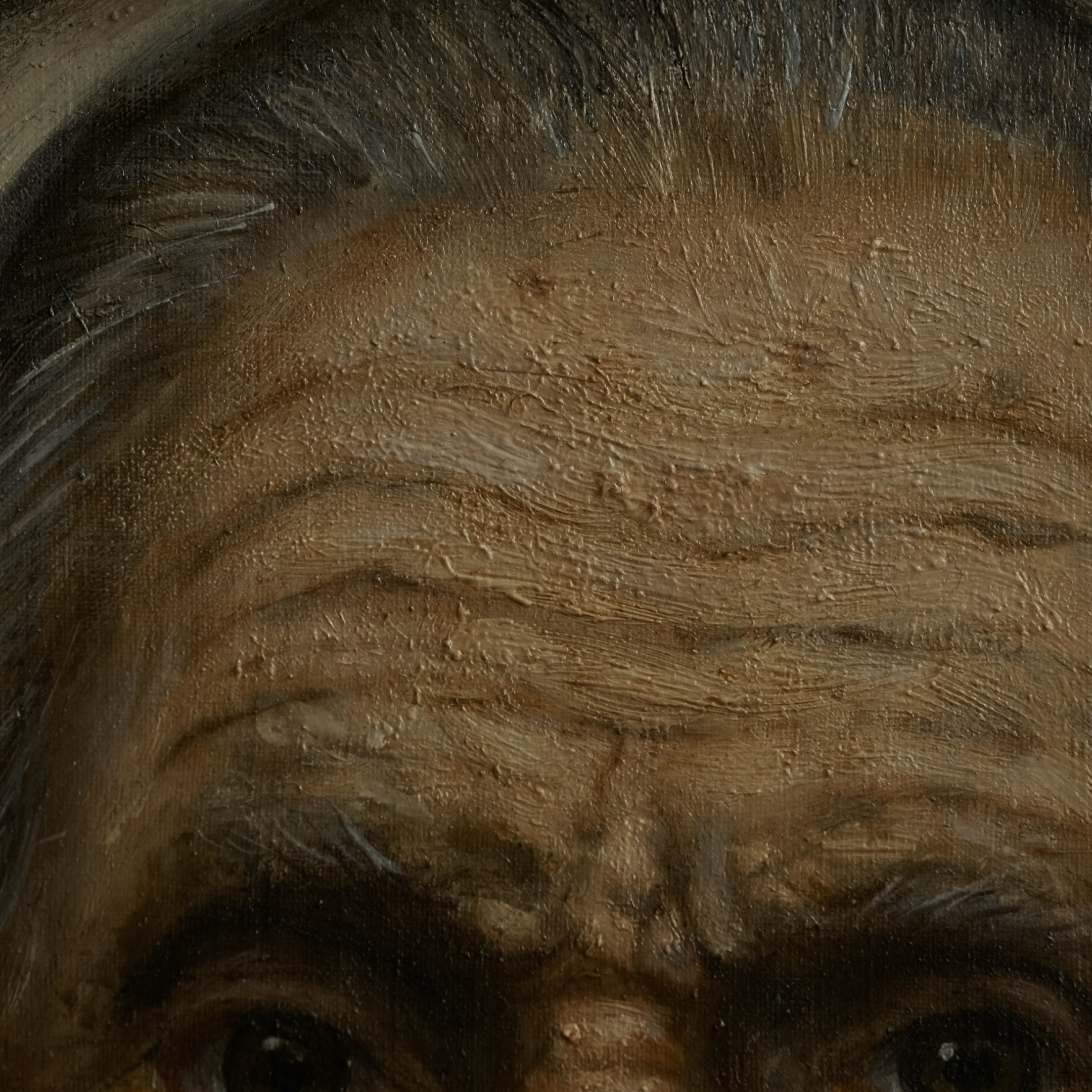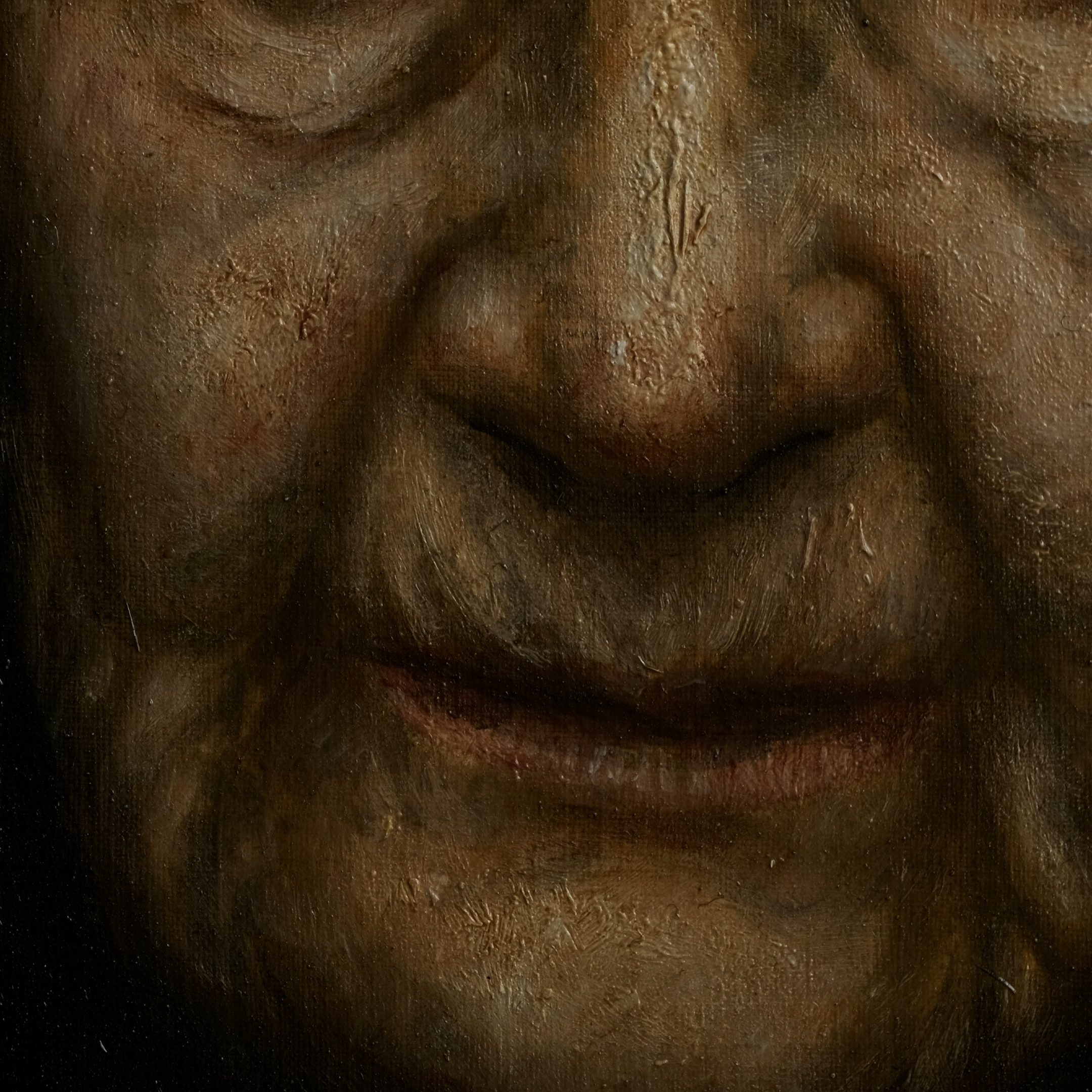A study of a old woman
This intimate portrait, rendered in oil on paper and meticulously adhered to a solid oak wood panel, is created using time-honored techniques of the Old Masters.
The artist employed traditional methods—layered glazing, underpainting, and fine detail work—to capture the profound presence and soul of the subject. Every wrinkle and subtle expression is a testament to the slow, meditative process that brings such timeless realism to life.
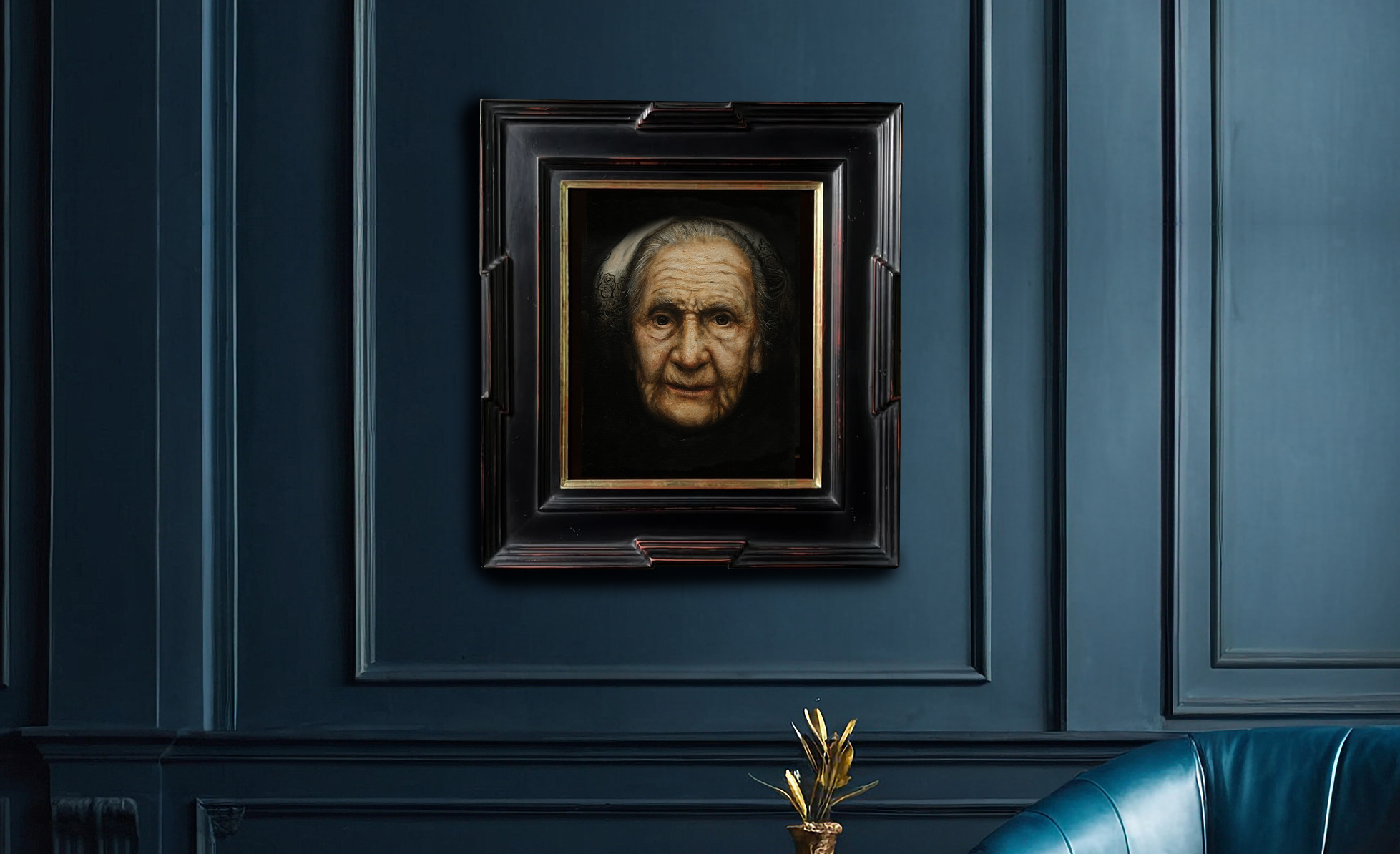
Portrait of a Fearless Soul" Oil on Paper, Handmade Pigments and Dutch Lead White — Old Masters Technique
This work is a tribute to the time-honored traditions of classical painting, executed entirely using materials and methods based on the practices of the Old Masters. The portrait is rendered in oil on specially prepared paper, a historically accurate support that offers a unique texture and absorbency ideal for fine, layered work.
The pigments used are natural, ground by hand, and prepared according to historical recipes.
Special attention was given to the creation of the lead white pigment — a crucial component of classical painting — which was made personally by the artist following the Dutch stack process, a 17th-century method historically used by painters such as Rembrandt and Vermeer. This method yields a warm, dense white with unique handling properties and subtle translucency, allowing for the lifelike rendering of skin tones and light.
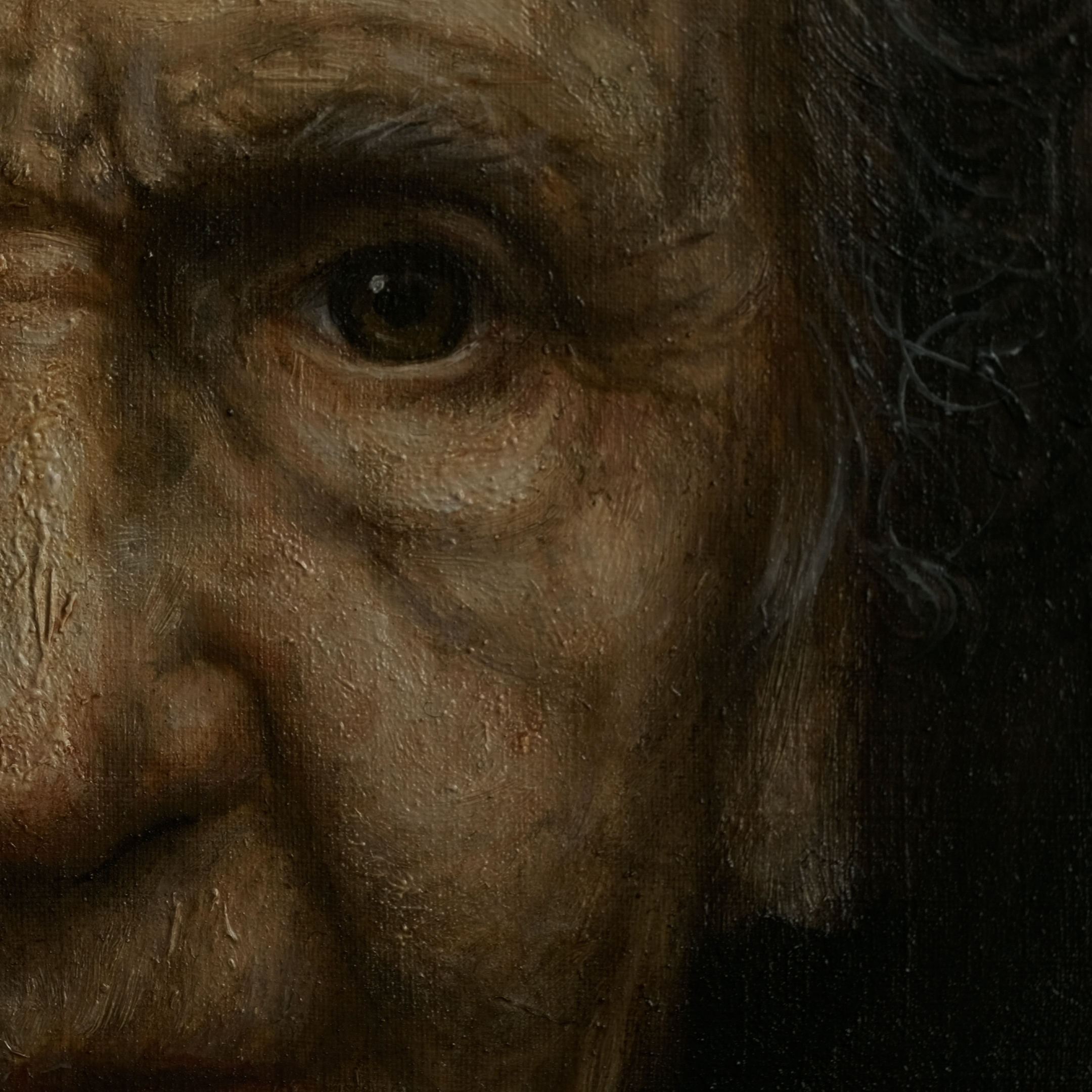
Multiple transparent and semi-transparent layers
The painting was constructed through multiple transparent and semi-transparent layers (glazes and velaturas), building depth and volume gradually. Each layer was allowed to dry thoroughly in accordance with traditional "fat over lean" principles, ensuring long-term durability and the optical richness characteristic of museum-quality oil paintings.
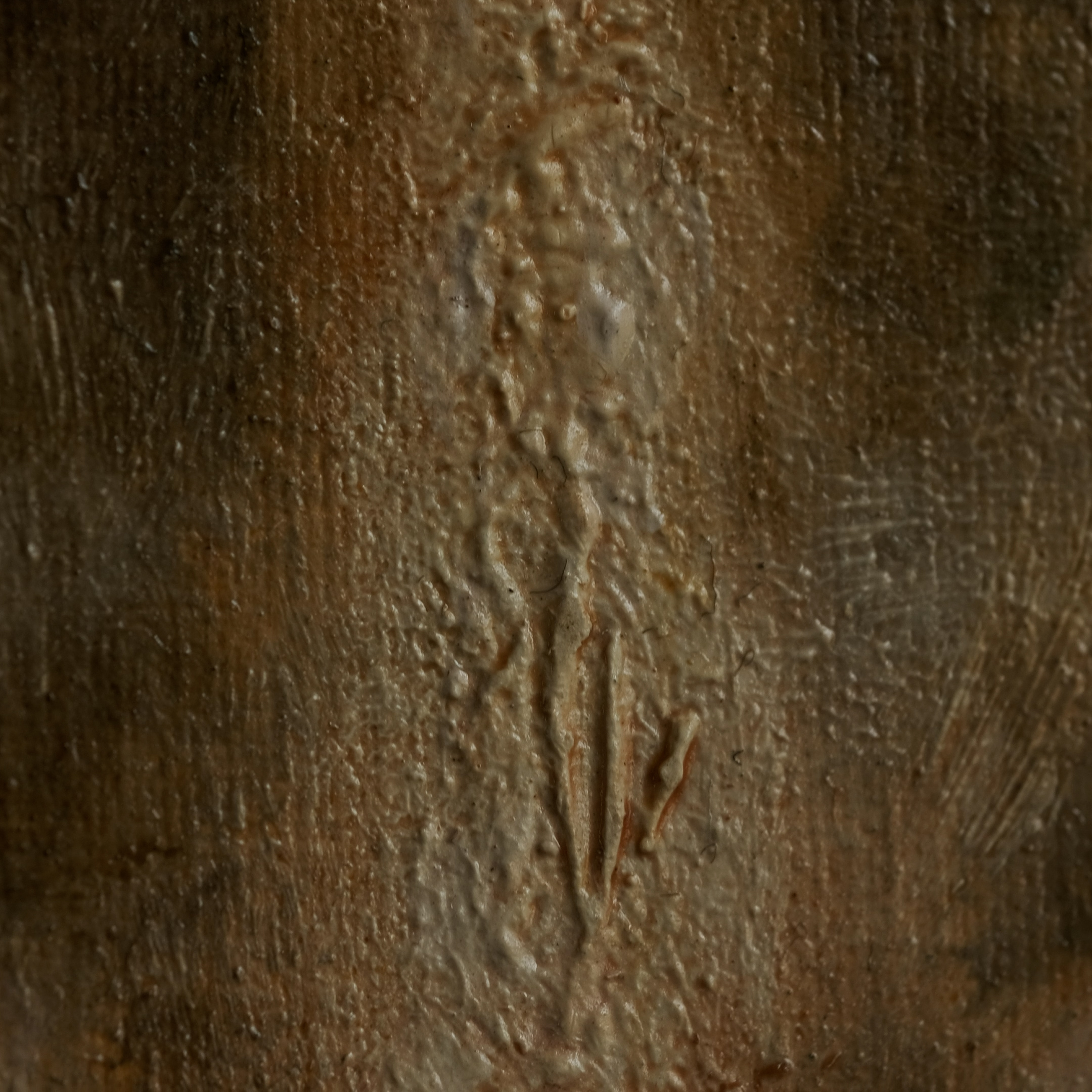
Through the chiaroscuro modeling and the emphasis on the emotional presence of the sitter, the work echoes the psychological realism of Northern Baroque portraiture. It invites the viewer into an intimate, almost sacred encounter with the human condition — unvarnished, honest, and full of depth.
The portrait's subject is an elderly woman — captured at a late stage in life. Though she has been left alone, her expression reveals no fear. There is a quiet power in her gaze, the kind that comes from a life marked by integrity, sacrifice, and a legacy of good deeds. This is not a sentimental depiction of aging, but a meditation on mortality — an homage to those who face the end not with despair, but with resolution and inner dignity. She is not defeated; she is prepared.



